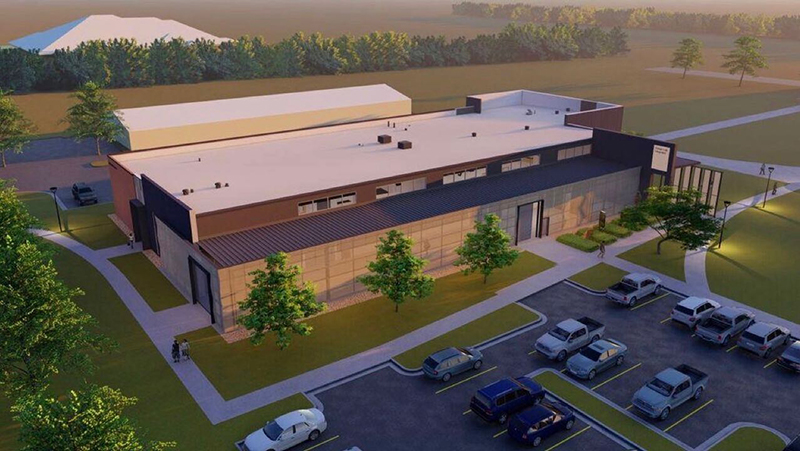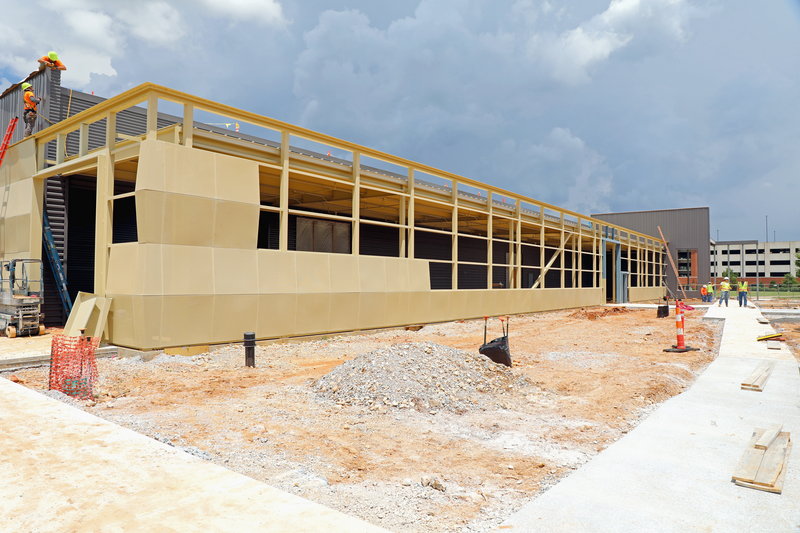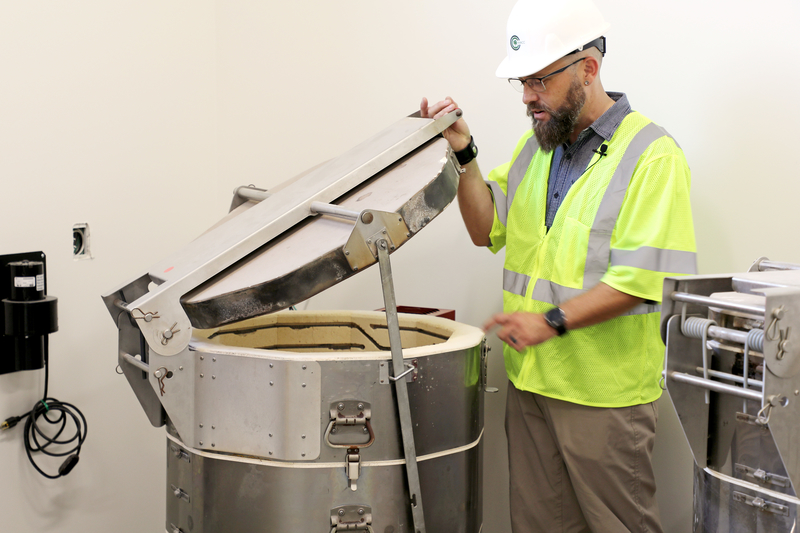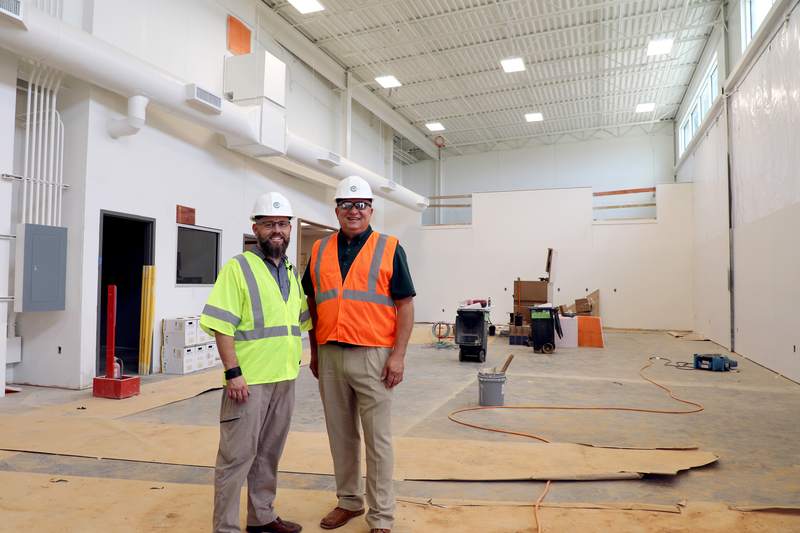Main Content Start
Integrated Design Lab to Inspire Artistic Form & Function

“The concept for the Integrated Design Lab is to put the trades and the arts in one
building, where we can begin to collaborate on the spirit of integrated design. Not
just an artist creating art, or a contractor just creating construction, or a business
person carrying out product development but those disciplines all coming together,
where we’re building off our strengths and moving forward with the integrated design
concept,” said NWACC Director of Construction Technology and Building Sciences Ray
Taylor.
Adorned in hard hats and neon-colored safety vests, Ray and NWACC 3D Art Specialist
Matt Meers recently toured the construction site of the new Integrated Design Lab
(IDL) on the NWACC Bentonville campus, which is scheduled to open to students for
the fall 2019 semester. An official grand opening event is scheduled for September 27th.

NWACC 3D Art Specialist Matt Meers (left) and NWACC Director of Construction Technology and Building Sciences Ray Taylor (right) touring the new Integrated Design Lab.
The two lit up as they spoke about the college’s plans for the new 18,589 square foot
structure and pointed out the exterior fabrication space that will be an additional
4,334 square feet. They stood in freshly painted and polished spaces that would soon
be classrooms, labs, offices and additional room for programs within the Workforce, Communication and Arts, and Business and Computer Information divisions of the college.

Ray pointed out the bigger and better offerings of what will become a new construction
lab and an all-purpose lab, while Matt touched on the inner workings of soon-to-be
print-making, painting, ceramic and kiln rooms.
“Within the IDL, and on the construction side, there’s an all-purpose lab. It will contain a 3D printer area, 3D router area, as well as a wood shop. In the same room, there will be a metal fabrication shop,” Ray explained. “Another area will hold a construction lab where students can build large projects for construction by using a crane that will be able to lift large pieces of steel and hold together steel pieces for commercial construction.”
“In here, we’ll do the initial firing and the glaze firing. Eventually, we’ll build
a wood kiln outside which is as ancient as human pottery can get… We’ll teach students
the high-tech and low-tech stuff,” Matt added as he made his way through the kiln
area of the building.

Students who participate in programming in the IDL will have the opportunity to enroll
in the technical certificate of Integrated Design, a credential which stacks fully into the Associate of Fine Arts (AFA) in Visual
Arts and layers into the Associate of Applied Science (AAS) in Construction Technology
and in Computer-aided Drafting (CAD). By pursuing integrated design, students will
learn how form and function, art and entrepreneurship, and creativity and industry
work side by side.
“Integrated design is really a way to look at design problems, community problems with a new light,” Matt said. “We want to empower students with the tools to be more than workers or tradespeople, but also innovators and entrepreneurs.”
Students’ design knowledge and skills will be displayed inside and outside the IDL. Ray and Matt envision students designing functional artwork throughout the lab and its grounds - wooden painting and work tables for classrooms, benches and chairs for the hallways, acoustic fixtures for the classrooms and event space, and so on. Essentially, the IDL building will be utilized as a canvas for students to exercise their skills and tout their work.
“The IDL building has an outdoor gathering area for students, a perfect space for
sculpture and 3D design students to research and draft designs for original, useable
art fixtures such as benches, chairs, tables and an awning,” Matt explained. “Construction
students will experiment with various materials such as steel, laminated wood and
concrete, and work with art and design students on blueprints to finalize design,
fabrication and installation.”

The men also identified the building’s architecture as a catalyst for inspiration,
collaboration and innovation.
“In the IDL, you’ll notice that every room has giant windows, so you don't have to sneak in to see what students are doing. It’s a platform to stand, observe and just to watch. So, I can imagine students walking through and stopping and watching to see what’s going on,” said Ray. “The artists can look inside that room and see what the construction students are working on and think, I never knew you could use materials like that, and gain and grow their ideas.”
The structure of the IDL building will be an evolving work of art meant to inspire, encourage collaboration and prepare students with design-based problem solving to then take with them into the community, leaving a creative impact.
“Going into the future, I see students going out and finding opportunities to design in the community and use their design knowledge and fabrication skills to really make an impact … Maybe one of the bike trails has a big dead area and there's no place to rest or get water. Students may think how can we mitigate that? How can we have a watering station that's self-sustaining and a good place to rest and gather,” Matt explained. “A student can identify it, design it, and propose it to the right people. That begins to really move a needle on what public art can do.”
There's a place for you here.
Interested in pursuing an education in integrated design? Visit nwacc.edu or call 479-986-4000 to learn more about choosing a higher education with NWACC.